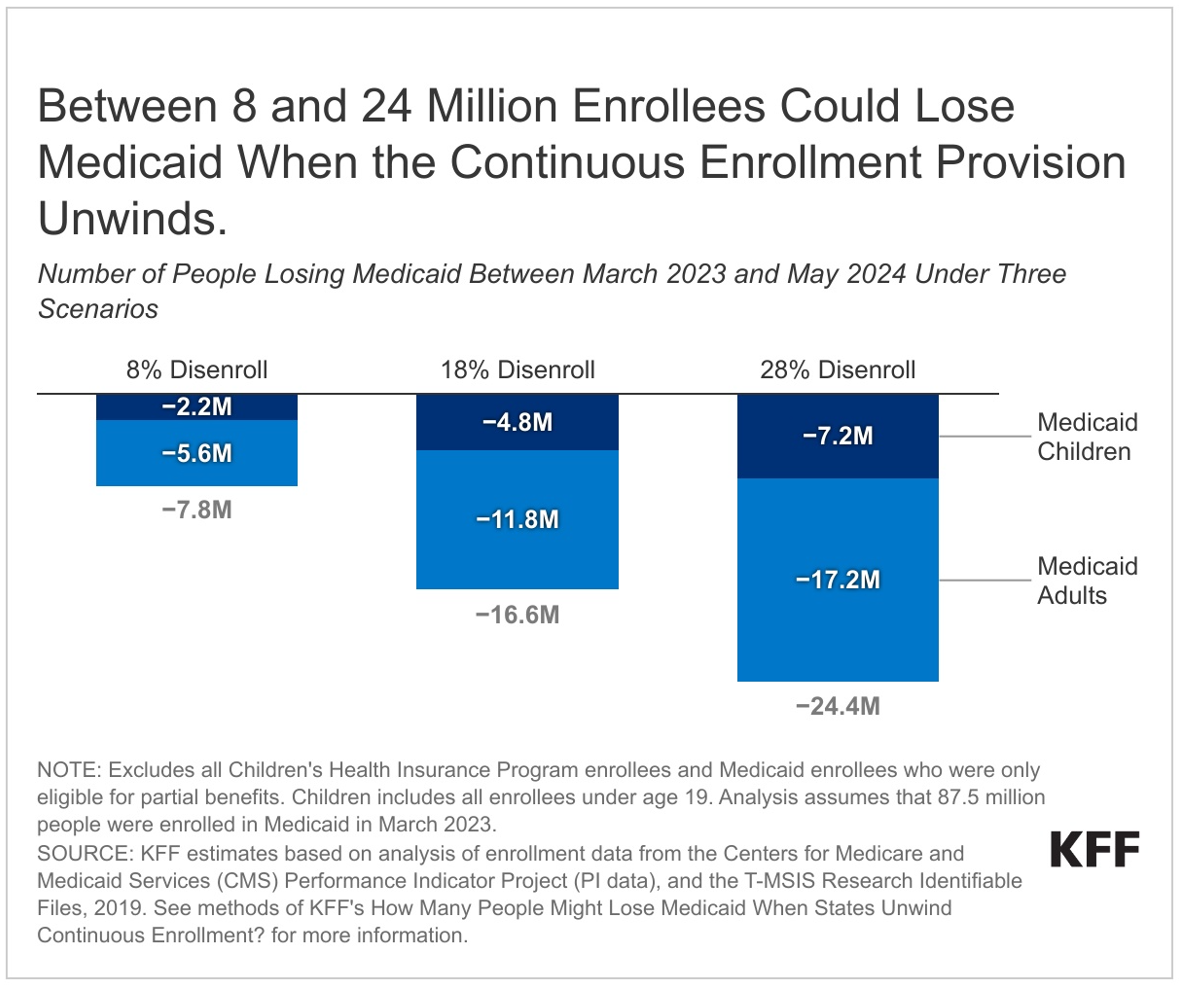Eight to 24 Million Could Lose
Medicaid Coverage by May 2024 Due to the End of Pandemic-era Enrollment
Protections
State Policies Will Help Shape How
Many People Are Disenrolled, Including Some Who Remain Eligible
A new KFF
analysis finds that between 8 and 24 million people across the
United States could be disenrolled from Medicaid during the unwinding of
the program’s continuous enrollment provision.
The estimates draw on data collected through KFF’s recent survey
of state Medicaid and CHIP officials, conducted with the Georgetown
University Center for Children and Families. The survey focused on states’
eligibility and enrollment policies, and their approaches to the unwinding
of pandemic-era protections that prevented states from disenrolling people
from Medicaid during the public health crisis. It included questions
about how many people states estimate will lose Medicaid coverage in the
months following the expiration of those protections in March.
Among states that responded to the survey, the midpoint estimate was that
18 percent would be disenrolled, suggesting that total Medicaid enrollment
could fall by about 17 million people nationally during the unwinding,
including 5 million children and 12 million adults. The new analysis offers
three illustrative scenarios for how state-level Medicaid enrollment could
decline between March 2023 and May 2024, ranging from 8 percent to 28
percent of total enrollees, which is plus or minus 10 percentage points
from the midpoint and similar to the varying projections reported by
states. While neither the lowest nor highest rate of disenrollment is an
expected national outcome, the range may be helpful in examining what the
variation could be across states.
|

|
The
new findings are consistent with HHS estimates
that as many as 15 million people will be disenrolled during the unwinding
process, including 6.8 million who will likely still be eligible. (KFF’s
analysis does not estimate how much of the Medicaid coverage loss would be
among people who are still eligible versus those who are no longer
eligible.)
The unwinding of the continuous enrollment provision will play out
differently across the states based on policy choices states have made and
variation in their administrative infrastructures. Some states have adopted
multiple policies that are more likely to promote continued coverage among
those who remain eligible. Other states have adopted fewer of these
policies, which will likely lead to a larger number of people losing
Medicaid coverage, including some who remain eligible.
According to another new
KFF analysis, eight states meet at least eight of the nine key
metrics that will support continued Medicaid coverage for those who remain
eligible. Seven states meet only three or four of the metrics. The nine
metrics come from the same survey
of state Medicaid and CHIP officials and include things such as taking
12-14 months to complete all renewals, following up with enrollees who
haven’t responded to a renewal request before terminating coverage, and
completing 50 percent or more of renewals using ex parte, or automated,
processes.
|
No comments:
Post a Comment